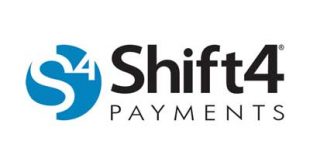Exactly one year ago in this space, we argued, in a little essay called “Less Static for NFC,” that the long-awaited arrival of near-field communication as a mainstream point-of-sale technology had been brought nearer by two developments. One was the decision by Apple Inc. to let its upcoming Apple Watch pair with iPhone 5 models for NFC transactions, thus widening the availability of Apple Pay beyond the newer iPhone 6 and 6 Plus.
The other development was the increasing population of terminals processing contactless transactions worldwide. That number had tripled between 2012 and 2014, to reach 9 million. And the rush to beat the then-pending U.S. EMV liability shift was spurring stores to put in EMV terminals, most of which ship with NFC capability built in.
Of course, that capability has to be switched on, a process not all retailers have yet performed. In some research we’ve done lately, the best estimate we can find is that somewhere around 1.5 million locations are lit up for NFC, though this number includes around half a million vending machines and probably several hundred thousand stores that still have older readers that process contactless cards.
Still, it’s likely most if not all merchants are going to turn on that NFC capability that came with their EMV gear, if not now, then soon. Why? Ironically, the reason lies in EMV itself. While cardholders so far may be tolerating the tedious process of sticking a chip card into a reader and waiting several seconds for the transaction to process, it’s not likely they will for long as more stores adopt EMV. Contact EMV is a lot slower than the old, familiar swipe, and some forgetful customers are walking out of stores without their cards. Merchants that depend on fast throughput (fast-food chains, for example) aren’t going to like it, either.
The solution is contactless EMV and mobile wallets, and that requires the radio-wave speed of NFC, which can, in the blink of an eye, link a card or phone held within about four inches of a reader. In the United Kingdom, after 10 years of chip-and-PIN, one-third of merchants accept contactless payments, and another 17% plan to soon. Nearly half of British consumers say contactless is their preferred payment method.
Why is this important? As more merchants switch on NFC, they create an essential and neutral infrastructure for mobile wallets, not just Apple Pay but also products like Android Pay (from Alphabet Inc.’s Google unit) and Samsung Electronics Co. Ltd.’s Samsung Pay that come with the backing not just of one bank or merchant but of multiple parties.
So, more static for contact EMV could mean less static for NFC.
—John Stewart, Editor, john@digitaltransactions.net




